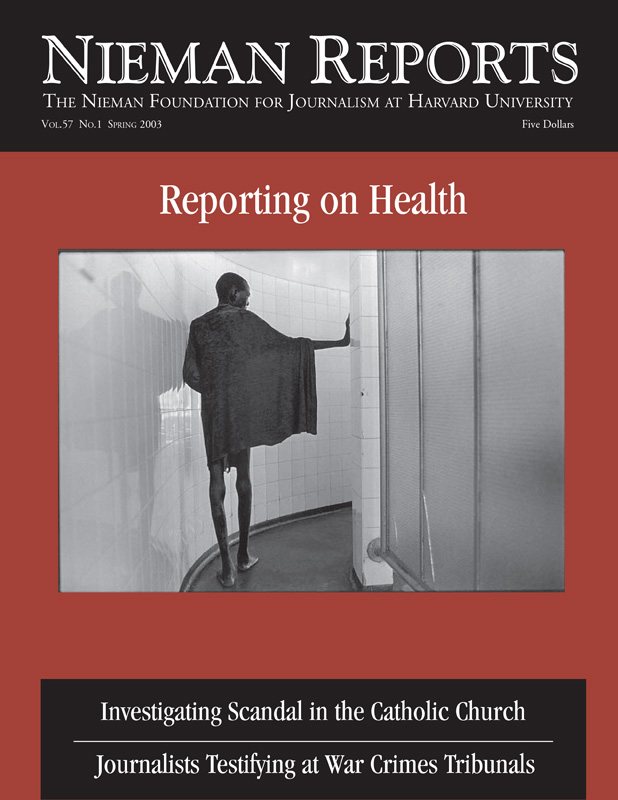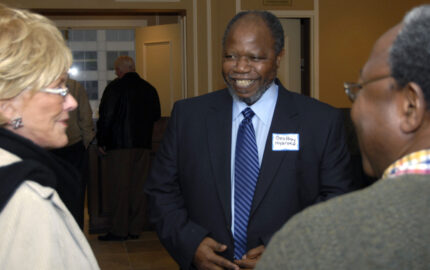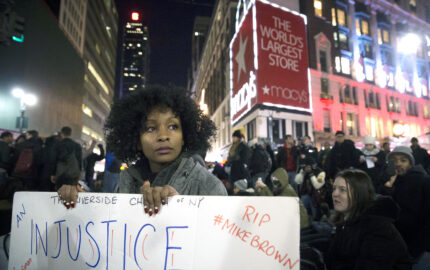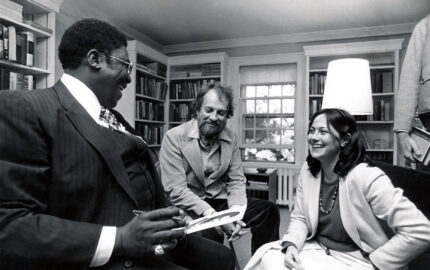Painter Melora Kuhn first saw a photograph of Canada’s Dionne quintuplets in The Boston Globe in 1998 in an article about their success suing their government because of the separation from their parents while they were young children. The article included a history of the exploitation of the quintuplets by their parents and others, and Kuhn said she was “compelled by the fear and sadness in their expressions, and the story struck me as tragic and obscene.” She did a painting reflecting her reaction to that photo and article. In 2001, she read about the death of one of the quintuplets in The New York Times. The photo accompanying the Times article showed them, at least on the surface, to be happy, well-adjusted children. Kuhn painted their portrait again.
In July of 2000, painter Jose Santos read a letter to the editor of The New York Times. He was struck by the line, “Since 1980 we have produced more prison cells than low-income housing units. And most new prisons are in rural Congressional districts—in other words, a jobs program for rural, white residents who overwhelmingly vote Republican.…” Troubled by the information in the letter, he read more news articles about prisons. Then he spent painstaking months working on paintings to reflect his feelings about the U.S. prison system, exploring “the physical space of being imprisoned, treating it as a subject that is disturbing and beautiful at the same time.”
These are two of 11 artists whose work was a part of “News to Images,” a show about how visual artists absorb what they see and read in the press and turn the mix of information and emotion into art.
“News to Images” was presented in the fall of 2002 in the gallery of the Brickbottom Artist Building in Somerville, Massachusetts. The germ of the show began in the summer of 2000, while I was looking for images to use in a section of Nieman Reports focusing on photojournalism and war. One photo I found from Sierra Leone was of a boy without a hand. It had been cut off by a group of young rebels. An image came to mind of what it might have been like at the moment the hand was cut off: the boy lying flat on the ground, his face in the dirt, his wrists in pain. He starts to lift his head to see what happened and realizes that his arms have moved, but his hands are dead still. For years that image stayed with me until, finally, the idea of creating a show made up of artists similarly haunted by a newspaper article or photograph gave me the context to act, and I was able to paint my images, “The Moment It Happened.”
In working with the artists who were part of this show, I was moved by the surprising and often profound effect journalism can have on its readers.
In July of 2000, painter Jose Santos read a letter to the editor of The New York Times. He was struck by the line, “Since 1980 we have produced more prison cells than low-income housing units. And most new prisons are in rural Congressional districts—in other words, a jobs program for rural, white residents who overwhelmingly vote Republican.…” Troubled by the information in the letter, he read more news articles about prisons. Then he spent painstaking months working on paintings to reflect his feelings about the U.S. prison system, exploring “the physical space of being imprisoned, treating it as a subject that is disturbing and beautiful at the same time.”
These are two of 11 artists whose work was a part of “News to Images,” a show about how visual artists absorb what they see and read in the press and turn the mix of information and emotion into art.
“News to Images” was presented in the fall of 2002 in the gallery of the Brickbottom Artist Building in Somerville, Massachusetts. The germ of the show began in the summer of 2000, while I was looking for images to use in a section of Nieman Reports focusing on photojournalism and war. One photo I found from Sierra Leone was of a boy without a hand. It had been cut off by a group of young rebels. An image came to mind of what it might have been like at the moment the hand was cut off: the boy lying flat on the ground, his face in the dirt, his wrists in pain. He starts to lift his head to see what happened and realizes that his arms have moved, but his hands are dead still. For years that image stayed with me until, finally, the idea of creating a show made up of artists similarly haunted by a newspaper article or photograph gave me the context to act, and I was able to paint my images, “The Moment It Happened.”
In working with the artists who were part of this show, I was moved by the surprising and often profound effect journalism can have on its readers.



